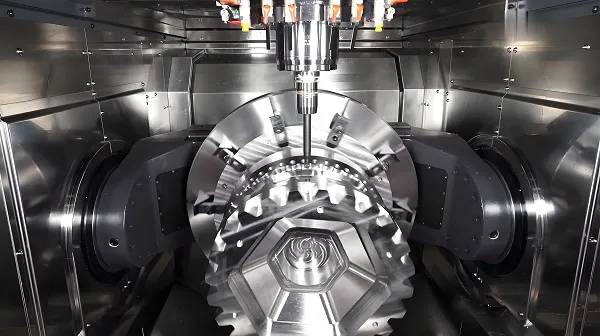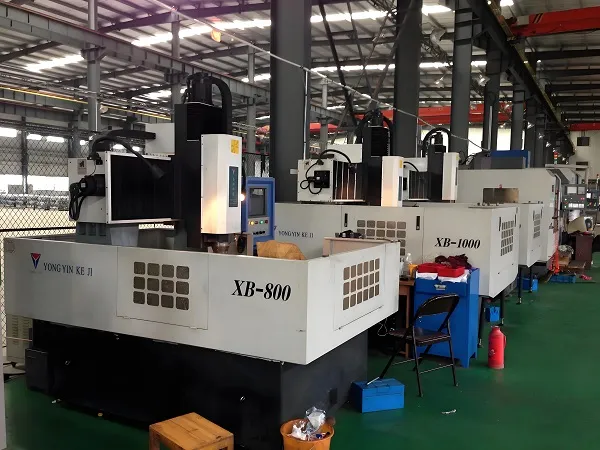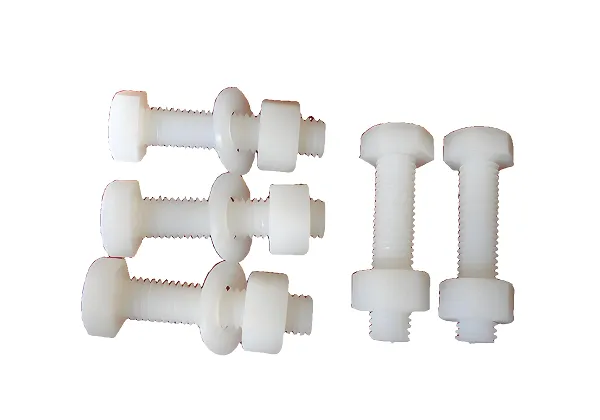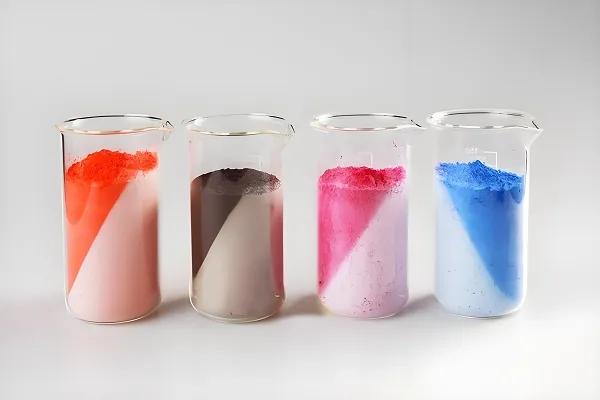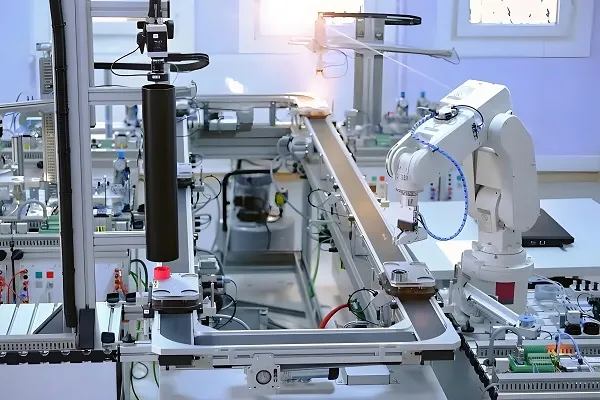In the ever – evolving landscape of modern manufacturing, CNC machining of plastic parts made from materials like POM (Polyoxymethylene), nylon, PTFE (Polytetrafluoroethylene), and UHMWPE (Ultra – High – Molecular – Weight Polyethylene) has emerged as a crucial technology. These plastics offer a wide range of unique properties, such as excellent wear resistance, chemical inertness, low friction, and high strength – to – weight ratios. When processed through Computer Numerical Control (CNC), they can be transformed into high – precision components that meet the stringent requirements of diverse industries. This article delves into the technical capabilities, customization process, material characteristics, quality control, and industry applications of CNC machining plastic parts made from POM, nylon, PTFE, and UHMWPE, highlighting their significance in driving innovation and reliability.
I. Technical Capabilities: Precision in Plastic Machining
(A) Exceptional Dimensional Accuracy
CNC machining systems for plastic parts are meticulously calibrated to achieve outstanding dimensional accuracy. With positioning accuracy reaching ±0.003mm and repeat positioning accuracy of ±0.005mm, we can fabricate plastic parts with tight tolerances. For components used in precision instruments or medical devices, where even minor dimensional variations can impact functionality, these precise controls ensure a perfect fit and optimal performance. This level of accuracy reduces the need for post – machining adjustments, saving time and enhancing the overall quality of the final product.
(B) Complex Geometry Machining
CNC technology, especially multi – axis machining, enables the creation of plastic parts with highly complex geometries. Whether it’s parts with intricate internal channels for fluid flow, organic – shaped components for ergonomic designs, or parts with multi – angled surfaces for optimized functionality, CNC machining can execute these designs with precision. Compared to traditional machining methods, CNC plastic machining reduces setup – related errors from ±0.01mm to within ±0.005mm. It also boosts production efficiency by over 50% through automated tool changes and optimized machining paths, allowing for the rapid manufacturing of complex plastic parts, even those with the most elaborate designs.
(C) Advanced Machining Techniques for Plastics
Plastics have unique machining characteristics that require specialized techniques. For heat – sensitive plastics like PTFE, low – speed machining with sharp cutting tools and efficient cooling systems are used to prevent material deformation and melting. In the case of tough plastics such as UHMWPE, high – speed machining with carbide – coated tools can improve cutting efficiency while maintaining surface integrity. Additionally, processes like tapping, threading, and engraving can be carried out with high precision on CNC machines, ensuring that every aspect of the plastic part meets the highest quality standards.
II. End – to – End Customization: Tailoring Parts to Your Requirements
(A) In – Depth Requirement Analysis and Design Conceptualization
When you approach us with your plastic part requirements, our experienced engineering team initiates detailed discussions to understand your application, performance expectations, and design preferences. We consider factors such as the operating environment (temperature, humidity, chemical exposure), the mechanical loads the part will endure, and any specific functional or aesthetic requirements. Using state – of – the – art CAD/CAM software, we generate multiple design concepts. We then collaborate closely with you, refining the designs based on your feedback until they perfectly align with your vision, whether it’s a minor modification to a standard part or a completely new design for a specialized project. For example, if you need a custom – made POM gear for a high – precision mechanical system, we will analyze the torque requirements, rotational speeds, and environmental factors to create a design that optimizes the part’s performance.
(B) Strategic Material Selection and Cost Analysis
Based on the finalized design, we recommend the most suitable plastic material for your parts. Each material has its own set of properties:
- POM (Polyoxymethylene): Known for its high stiffness, excellent dimensional stability, and low friction. It has a tensile strength of up to 70 MPa and is commonly used for gears, bushings, and bearings due to its good wear resistance and self – lubricating properties.
- Nylon: Offers a balance of strength, toughness, and chemical resistance. With a tensile strength ranging from 50 – 90 MPa depending on the type, it is widely used in applications such as automotive components, electrical insulators, and consumer products. Nylon also has good impact resistance and can withstand a wide range of temperatures.
- PTFE (Polytetrafluoroethylene): Renowned for its extremely low friction coefficient, chemical inertness, and high – temperature resistance (up to 260°C). It is often used in applications where non – stick properties, corrosion resistance, and high – purity are required, such as in chemical processing equipment, medical devices, and aerospace components.
- UHMWPE (Ultra – High – Molecular – Weight Polyethylene): Boasts exceptional abrasion resistance, high impact strength, and low friction. It has a very high molecular weight, which contributes to its excellent wear resistance. UHMWPE is commonly used in applications like conveyor belts, artificial joints, and wear – resistant linings.
Simultaneously, we conduct a detailed cost analysis, factoring in material costs, machining complexity, the need for custo analysis, factoring in material costs, machining complexity, the need for custom tooling, and production volume, to provide you with a transparent and competitive quote. Our goal is to help you select the material that offers the best balance of performance and cost for your specific application.
(C) Precision Manufacturing and Order Tracking
Once you approve the design and quote, production commences. You can monitor the progress of your order in real – time through our dedicated online tracking platform. Our skilled technicians operate state – of – the – art CNC turning, milling, and drilling machines, following strict manufacturing standards to produce plastic parts that meet the highest quality benchmarks. We keep you informed at every stage of the production process, from raw material procurement to the final inspection, ensuring complete transparency and peace of mind throughout the manufacturing journey. Whether your order is for a single prototype or a large – scale production run, we are committed to delivering your parts on time and to the highest quality standards.
(D) Rigorous Quality Assurance and Timely Delivery
After production, each plastic part undergoes a rigorous quality inspection. Only parts that meet our exacting standards are shipped to you. We perform dimensional inspections using coordinate measuring machines (CMMs) to ensure that all critical dimensions are within ±0.003mm. Surface finish measurements are taken to ensure that the surface meets the required roughness specifications for optimal functionality and aesthetics. In addition, we conduct mechanical tests, such as tensile strength testing, impact testing, and hardness testing, to validate the performance of the parts. For parts used in applications where chemical resistance is crucial, we also perform chemical immersion testing. We also offer comprehensive after – sales support, addressing any concerns you may have during the product’s lifecycle, and ensuring timely delivery to minimize downtime for your operations.
III. Strategic Material Selection: Leveraging the Unique Properties of Plastics
(A) POM (Polyoxymethylene)
POM is a semi – crystalline thermoplastic with excellent mechanical properties. Its high stiffness and low friction make it an ideal choice for parts that require precise movement and minimal wear. For example, in small – scale mechanical devices like watches or cameras, POM gears can operate smoothly with low noise and long service life. Its good dimensional stability also ensures that parts maintain their shape and size over time, even in varying environmental conditions.
(B) Nylon
Nylon comes in different types, such as Nylon 6 and Nylon 6/6, each with its own characteristics. In general, nylon offers good strength, toughness, and chemical resistance. It can be easily machined into various shapes, making it suitable for a wide range of applications. In the automotive industry, nylon is used for components like air intake manifolds, fuel lines, and electrical connectors due to its ability to withstand high temperatures and resist chemical corrosion from fuels and lubricants.
(C) PTFE (Polytetrafluoroethylene)
PTFE is often referred to as “Teflon” and is known for its unique combination of properties. Its extremely low friction coefficient allows it to be used in applications where smooth movement is essential, such as in sliding bearings and seals. Its chemical inertness makes it resistant to almost all chemicals, making it suitable for use in harsh chemical environments, like in the production of chemical processing equipment. Additionally, PTFE’s high – temperature resistance enables it to perform well in applications where parts are exposed to elevated temperatures.
(D) UHMWPE (Ultra – High – Molecular – Weight Polyethylene)
UHMWPE has a molecular weight much higher than regular polyethylene, which gives it exceptional abrasion resistance and impact strength. In the mining industry, UHMWPE liners are used in chutes and hoppers to reduce wear caused by the constant flow of abrasive materials. In the medical field, UHMWPE is used for artificial joints due to its biocompatibility, low friction, and high wear resistance, providing patients with long – lasting and reliable joint replacements.
IV. Stringent Quality Control: Ensuring Excellence in Every Part
(A) Raw Material Inspection
All incoming raw materials for plastic parts are subject to strict quality checks. We verify the material’s specifications, including its type, grade, and physical properties, through tests such as melt flow index testing and density measurement. Additionally, we conduct visual inspections to ensure that the materials are free from defects such as impurities or color variations. Only high – quality materials that pass these rigorous inspections are used in the production of our plastic parts.
(B) In – Process Monitoring
Throughout the manufacturing process, we employ statistical process control (SPC) techniques to monitor key manufacturing parameters. Regular sampling and data collection help us identify and correct any potential issues promptly. We monitor parameters such as cutting speeds, feed rates, tool wear, and the temperature during machining. Since plastics are sensitive to heat, maintaining proper temperature control is crucial to prevent material degradation. If any parameter deviates from the set values, we can adjust the process in real – time to ensure consistent product quality, maintaining the precision and reliability of each plastic part.
(C) Final Product Validation
Before shipping, each plastic part undergoes a comprehensive inspection. We use CMMs to verify dimensional accuracy, ensuring that all critical dimensions are within ±0.003mm. Surface roughness measurements are taken to ensure that the surface finish is optimized for the part’s intended function. For parts with specific surface requirements, such as those used in food processing or medical applications, we ensure that the surface meets the necessary hygiene and safety standards. Non – destructive testing methods, such as ultrasonic testing for detecting internal voids or cracks, are also used when applicable. Only parts that pass all these tests are considered ready for delivery.
V. Diverse Industry Applications: Meeting the Needs of Multiple Sectors
(A) Medical Industry
In the medical field, plastic parts made from materials like PTFE and UHMWPE play a vital role. PTFE is used in catheters, tubing, and surgical instruments due to its biocompatibility, low friction, and chemical resistance. UHMWPE is widely used for artificial joints, such as hip and knee replacements, because of its excellent wear resistance and biocompatibility. These CNC – machined plastic parts are manufactured with high precision to ensure a proper fit and long – term functionality, contributing to improved patient outcomes.
(B) Food and Beverage Industry
Plastic parts made from POM, nylon, and PTFE are commonly used in the food and beverage industry. POM is used for gears and conveyor components due to its self – lubricating properties and resistance to food – grade lubricants. Nylon is used for parts like food processing machine components and packaging equipment due to its strength and chemical resistance to food products. PTFE’s non – stick and chemical – resistant properties make it suitable for applications such as food processing equipment linings and seals, ensuring that food products are not contaminated during processing and packaging.
(C) Automotive Industry
In the automotive sector, nylon and POM are frequently used. Nylon is used for components such as engine covers, radiator end tanks, and electrical connectors due to its ability to withstand high temperatures, resist chemicals, and provide good mechanical strength. POM is used for parts like bushings, bearings, and small gears in automotive systems, where its low friction and high wear resistance contribute to smooth operation and reduced maintenance requirements.
(D) Industrial Manufacturing
In industrial manufacturing, UHMWPE, PTFE, and nylon are widely applied. UHMWPE is used for wear – resistant components like conveyor belts, chain guides, and chute liners, reducing downtime caused by wear and tear. PTFE is used in seals, gaskets, and bearings in chemical processing and industrial machinery due to its chemical resistance and low friction. Nylon is used for gears, pulleys, and structural components in various industrial equipment, providing strength and durability at a relatively low cost.
VI. Frequently Asked Questions (FAQ)
(A) What is the typical precision of CNC – machined plastic parts?
Our CNC machining of plastic parts can achieve a dimensional tolerance of ±0.003mm, ensuring a precise fit and optimal performance in various applications. This level of precision allows our parts to meet the demanding requirements of different industries.
(B) How long does it take to produce custom plastic parts?
Lead times vary depending on the complexity of the design, the materials used, and the order quantity. Simple designs can be completed in 3 – 5 days, while more complex ones may take 7 – 10 days. Rush orders are available upon request to meet urgent deadlines. We strive to provide fast turnaround times without compromising on quality.
(C) Can you customize plastic parts according to specific industry standards?
Yes, our team of experts is well – versed in various industry standards, such as ISO, FDA (for medical applications), and NSF (for food and beverage applications). We can customize plastic parts to meet or exceed these standards, ensuring compliance with your specific industry requirements.
(D) What are the surface finish options for plastic parts?
We offer a variety of surface finish options, including polished, matte, textured, and coated finishes. The choice of surface finish depends on the application requirements, such as aesthetics, friction reduction, and hygiene. For example, a polished finish may be suitable for parts used in medical devices for easy cleaning, while a textured finish may be preferred for parts that require better grip or anti – slip properties.
(E) How do you ensure the chemical resistance of plastic parts?
We select materials with inherent chemical resistance based on the application requirements. Additionally, we perform chemical immersion testing on the finished parts to verify their resistance to specific chemicals. Our manufacturing processes also minimize the risk of surface damage that could compromise the chemical resistance of the parts, ensuring their long – term durability in chemical environments.
VII. Customer Testimonials
A medical device manufacturer approached us to develop custom PTFE catheters. Our team utilized advanced CNC machining and material selection techniques to create catheters with precise dimensions and smooth surfaces. The new catheters met the strict medical industry standards, providing better patient comfort during procedures and reducing the risk of complications. The manufacturer was highly satisfied with the quality and performance of our custom plastic parts, leading to a long – term partnership.
An automotive parts supplier needed custom – made nylon engine covers. We designed and manufactured the engine covers using precision CNC machining, ensuring a perfect fit and excellent heat resistance. The custom engine covers improved the engine’s protection and reduced noise levels, enhancing the overall quality of the vehicles. The supplier reported increased customer satisfaction and a boost in sales, thanks to the high – quality plastic parts we provided.
Reach Out Now for Your Plastic POM Nylon PTFE UHMWPE CNC Machining Parts!
Whether you are in the medical, food and beverage, automotive, industrial, or any other industry, our team of experts is ready to provide you with high – quality, customized plastic CNC machining parts. We offer a seamless end – to – end service, from design and material selection to manufacturing and quality assurance. Contact us today to discuss your project requirements and take the first step towards getting parts that will enhance the performance and reliability of your products.


